No American has been able to buy a brand-new Smart Fortwo since the brand departed American shores back in 2019. Just under 100,000 of the city cars were sold in America, and most of the survivors seem to be hoarded by devotees of Smart like me. The ones that I haven’t purchased are living a fascinating second life. They’re no longer vehicles used on the road, as many Smarts are being preserved in medical centers, and help patients relearn a common ability. The reason why makes a lot of sense.
Every once in a while, someone on the Internet finds a seemingly random pristine car just sitting inside or on top of a hospital. For example, one person on X posted photos of a perfect Mitsubishi Galant sitting atop a Jefferson Health facility in Philadelphia, Pennsylvania. On the surface, this is patently silly. Why is a hospital displaying a car that most people found disposable?
Well, it relates to recovery. The human body is like an amazing machine. You can get hurt by injuries or felled any number of conditions, and your body not only has the ability to heal, but adapt. Even if a condition is permanent, you can learn how to retain a good quality of life. These seemingly random cars are important tools for recovery.
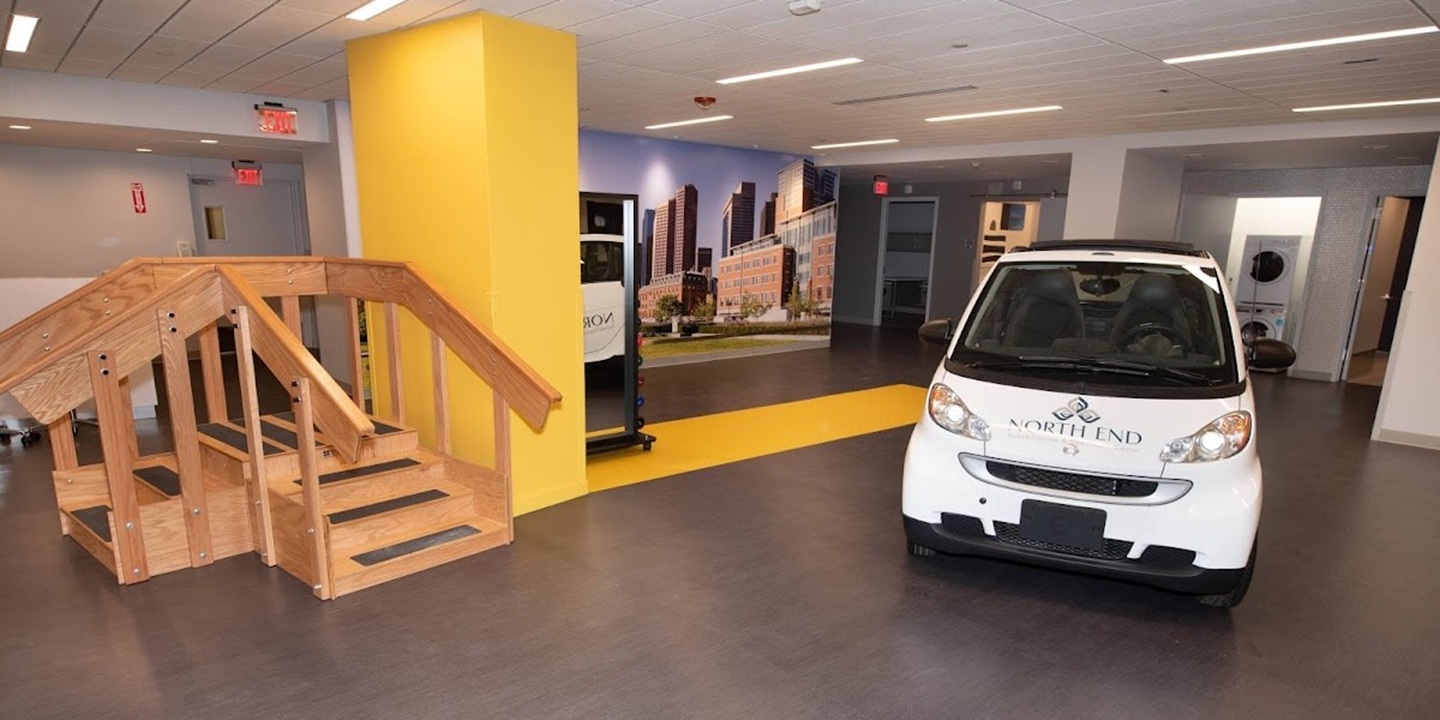
Getting You Back On The Road
These cars are used for a multitude of reasons. In many cases, they’re used for what some facilities call “transfer training,” and they teach the patient and possibly the caregiver how to transfer a patient from a wheelchair and into a car. Other times, these cars, as well as car transfer simulators (below), are used to train a patient recovering from a hip or knee surgery in a safe way to get in and out of their car. They’re also used to retrain patients on car entry and egress after an amputation.
Mile Bluff Medical Center of Mauston, Wisconsin, explains further:
Getting in and out of a car is something many individuals take for granted. After a person loses functional mobility due to stroke, brain or spinal cord injury, amputation, joint replacement or other conditions, it is an activity that needs to be practiced and re-learned. It is important for patients to gain confidence in their ability to get in and out of a car, while learning to also safely position themselves during transfer so they protect any surgical wounds they may have.
The car transfer simulator is designed to provide a safe and convenient alternative to parking lot car transfer training sessions. The simulator allows patients to learn and practice car transfer skills in the year-round comfort and safety of an indoor setting.
“In the past, family members would have to bring a vehicle to practice transfers outside with the patient,” commented Marlene Rosenberg, Director of Mile Bluff’s Rehabilitation Services Department. “Sometimes, due to limited family availability, the first opportunity to practice was on the day the patient was scheduled to go home.”

That’s right, for many medical centers, these practice sessions happen outside, which involves getting the patient out and into a live parking lot to practice getting in and out of a car. This method works, but taking your patient outside is a lot more work than just having them get in and out of a car that’s already in the hospital. Then, they can practice getting in and out of a car regardless of what’s going on outside.
One thing to note is that patients will often drive their cars to their therapy appointments, so learning how to get in and out of a vehicle is often a necessary step in recovering from an injury, surgery, or condition.
The Custom Solution
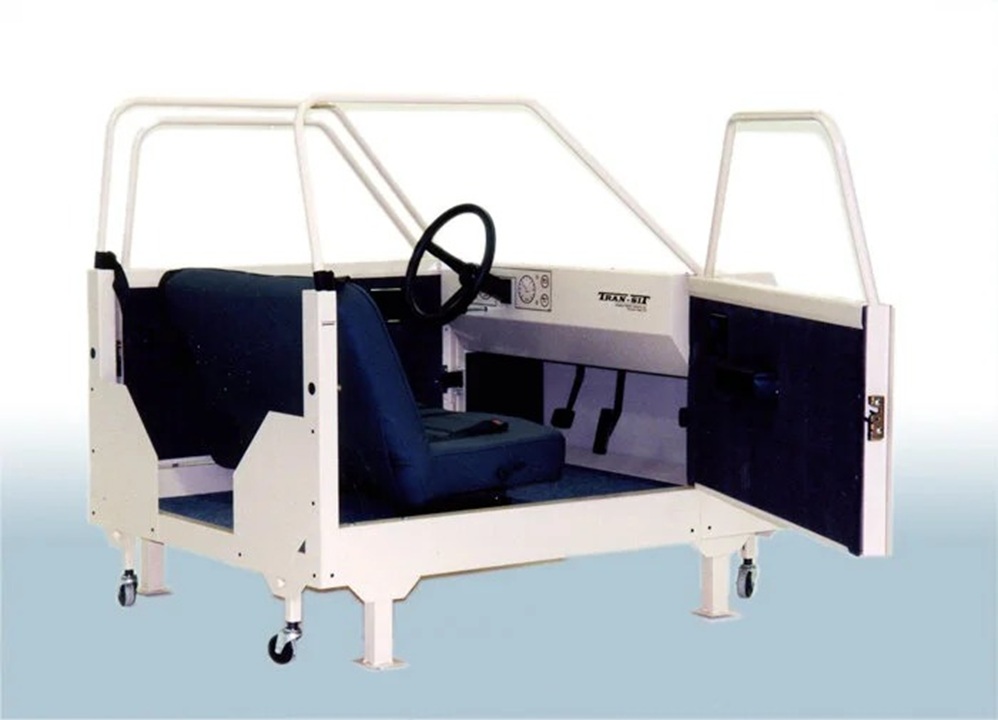
A lot of facilities buy what’s called a car transfer simulator. This device replicates the cabin of a car, complete with seats, a steering wheel, a dashboard, an A-pillar, and a B-pillar. One name-brand product in this space is the Tran-Sit Car Transfer Simulator by Advanced Therapy Products. Here’s a description:
The WT-960 TRAN-SIT® Car Transfer Simulator is designed to provide a safe and convenient alternative to “parking lot” car transfer training. The TRAN-SIT® allows your patients to learn and practice car transfer skills in the year-round comfort and safety of a clinical setting.
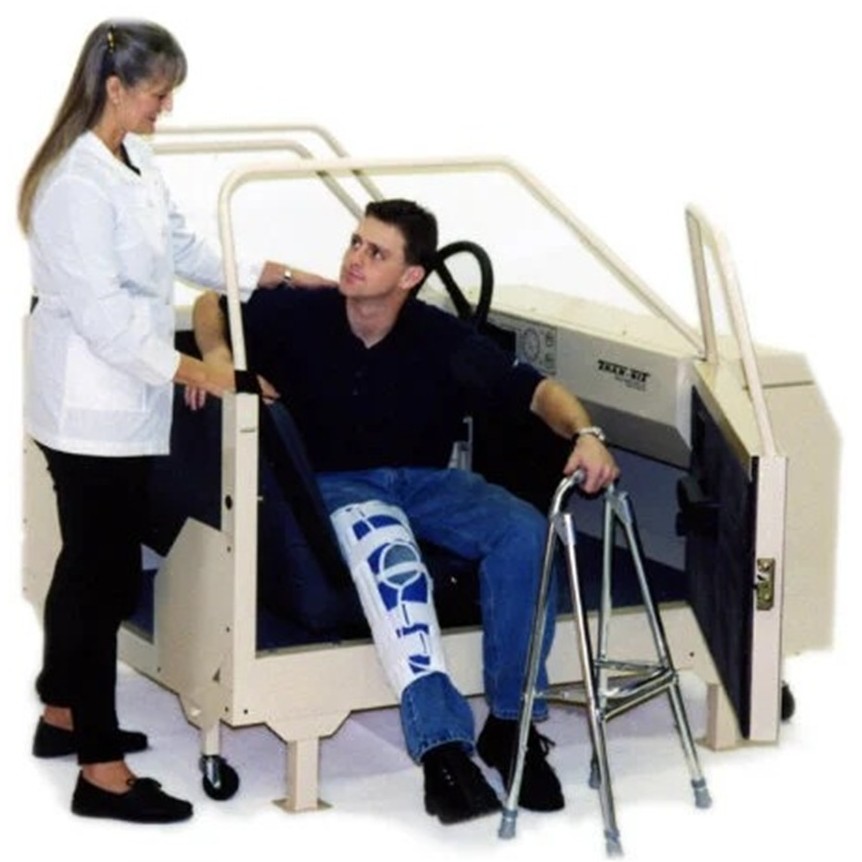
It is loaded with features; true-to-life vehicle components like functional doors, reclining bucket seats, tilt steering column, and wheelchair loading space make it look and feel like a real car. The open-back design also makes training easier for both you and your patient.
Quality-constructed to provide years of active use and consistent performance, the TRAN-SIT® is an attractive, functional, and valuable addition to any rehab program. Its life-like appearance also adds to the realism of car transfer training activities.
The Tran-Sit is a neat bit of kit. Clinics can order these things with height-adjustment systems so that the Tran-Sit can be set to the exact height of the patient’s personal vehicle. The device also weighs around 500 pounds and can be ordered with caster wheels so it can be easily moved around.
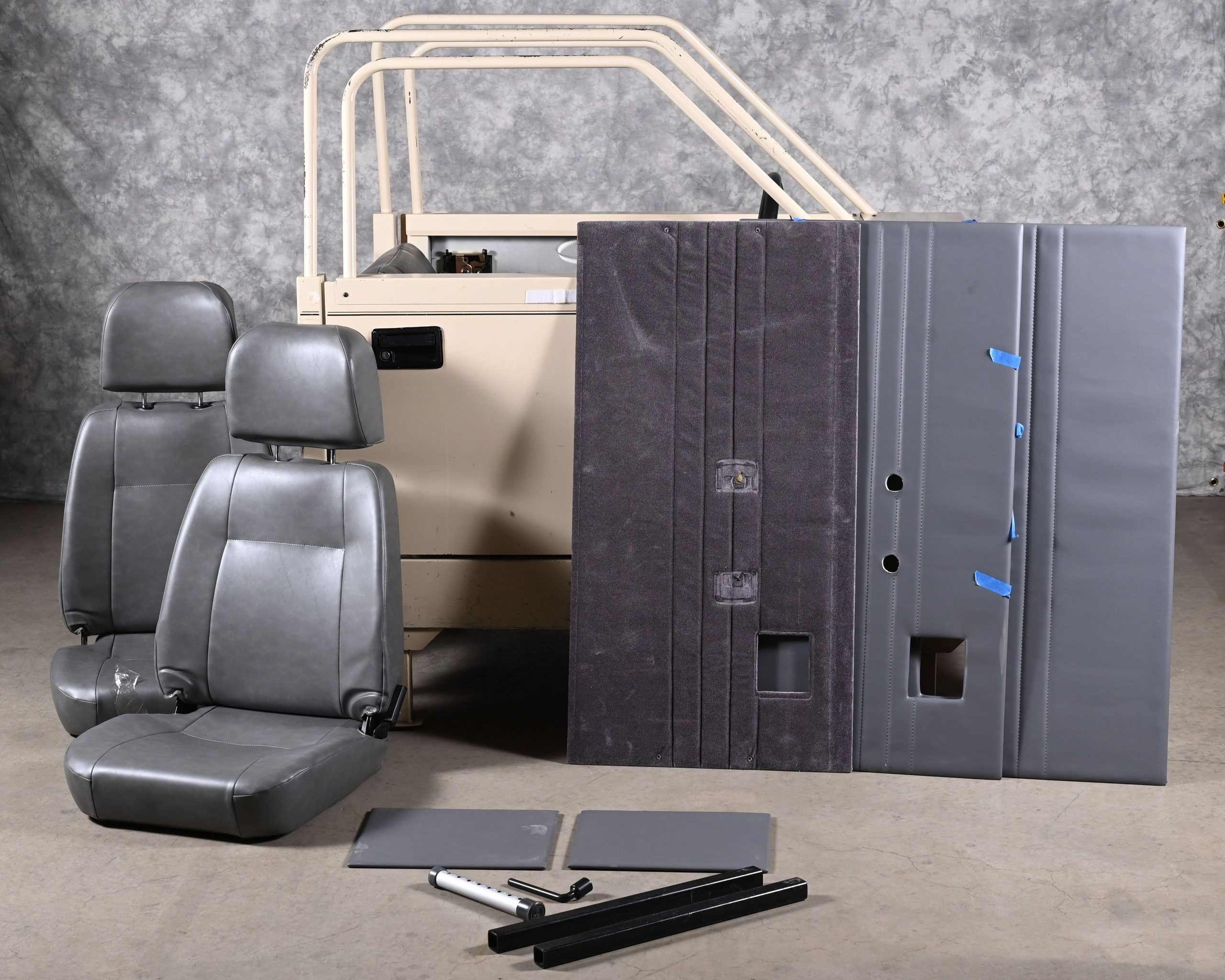
KPLC 7 News explains how big a deal this is:
It has been one month since a farming accident left Lucas Stewart of Vinton pinned underneath a hay bale. In an instant, Stewart lost the feeling in much of his body and with it, the ability to walk, stand or drive. “When it happened, I knew I broke my back,” he said.
CHRISTUS St. Patrick Hospital occupational therapist Orlando Berlanga has been working with Stewart in the TRAN-SIT Car Transfer Simulator: a safe alternative to practicing in the parking lot of the hospital, which was the only real-time option prior to this equipment. “We would definitely practice on different levels of mat tables and then we would go down to their actual car if they could bring it here and do hands-on with their car,” said Berlanga.
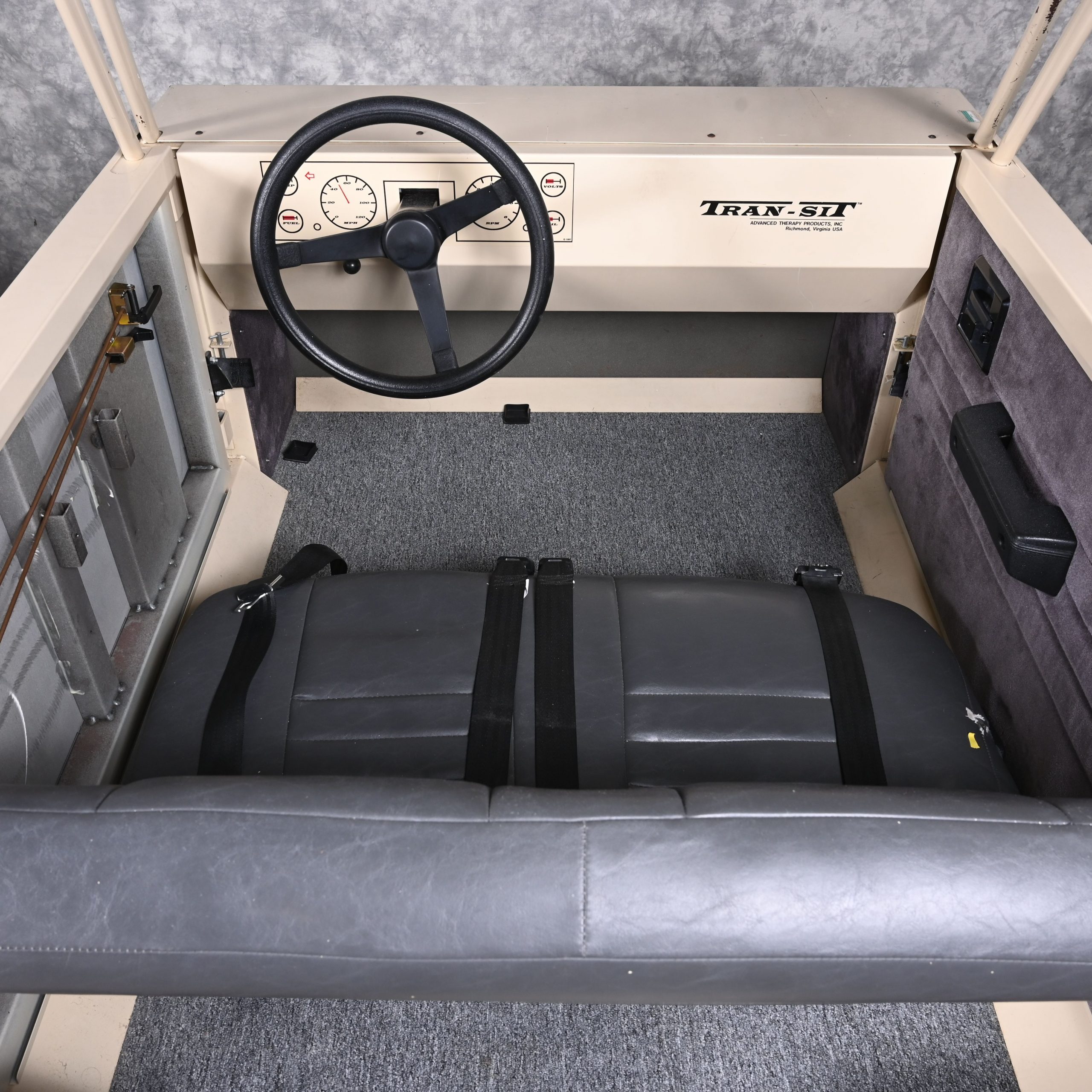
This system will adjust to the height of your car, truck or SUV and it has hand controls for patients that can no longer use the foot pedals. “Anybody that can’t use their legs, they can use the hand controls for the gas and the brake,” said Berlanga. One of the most important tests to see if it is safe for a patient to once again get behind the wheel looks at the reaction time when starting and stopping. “We know they can get in the car safely and we can do actual practice with their families and make sure everything’s safe,” said Berlanga.
New Life For An Old City Car
A new Tran-Sit simulator costs $15,000 and gets more expensive with options. The funny part is that medical facilities have discovered that there’s something cheaper than a fake car, and it’s a real car. While some facilities will grab any cheap car that they can get their hands on, many facilities are getting one specific cutie, and it’s the Smart Fortwo.

The Smart Fortwo might have been unfavored by the American buying public, but hospitals are finding them to be a cute, practical, and cheap way to help people regain their mobility. A hospital can pick one of these cars up for a few grand and use it for the same purpose that the Tran-Sit serves.
In 2014, the Berkshire Eagle wrote about how the Sweet Brook Nursing Center of Williamstown, Massachusetts, got its new rehabilitation tool:
The skilled nursing facility in Williamstown has commissioned T&M Auto Sales of North Adams to strip-down a used “Smart Car” for use by its occupational and physical therapists. The project stands to be the only tool of its kind in Berkshire County, according to Director of Rehabilitation Jane Edge.
“Driving assessments are something therapists are always keenly involved in,” she said Thursday. “Having our own car in our facility will give us the opportunity to better assess patients’ abilities.”
Edge explained that rehabilitation has grown from just increasing patients’ strength to include enhancing clients’ abilities to carry out functions that are part of a their daily life. Someone who has had a hip replaced could have difficulty moving around and need to practice getting in and out of a vehicle, she said. Someone else could have had a stroke or head injury and need similar practice. The car will also be used to assess patients’ cognitive and perceptional skills, reasoning and their alertness, she said.
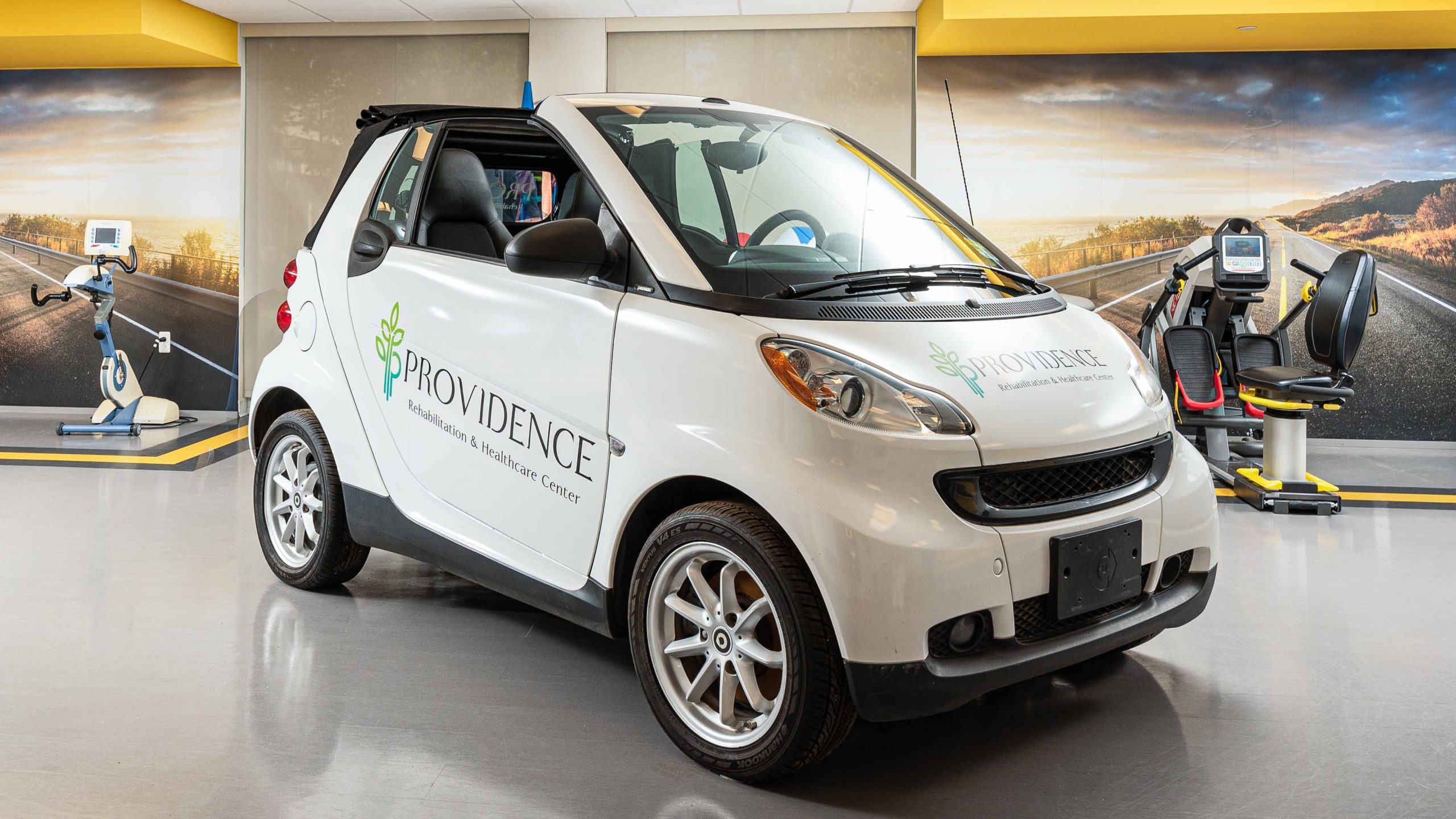
T&M Auto Sales reportedly pitched the car as a good fit for rehabilitation because it was a convertible, which means that the care team has easy access to the patient. But also, while Smarts are tiny, they were built with crossover-like high seating positions. This makes entry and egress easier, not unlike the crossovers that the patients are likely to already have at home.
Plus, Smarts are real cars, so they all of the bits and pieces that would normally be an upcharge to make a Tran-Sit simulator emulate a real car.
There are other good reasons to go with a Smart, too. These cars are only a touch wider than five feet, so they can easily slip through a set of commercial double doors. Smarts are also small and light enough to fit in freight elevators, too. Facilities, like the Sweet Brook Nursing Center, have the engine and drivetrain removed, which both make the car lighter and ensure that there will never be a chance of a dirty engine leaking in a hospital. Those parts could also be sold to one of the many Smart owners in need of parts.
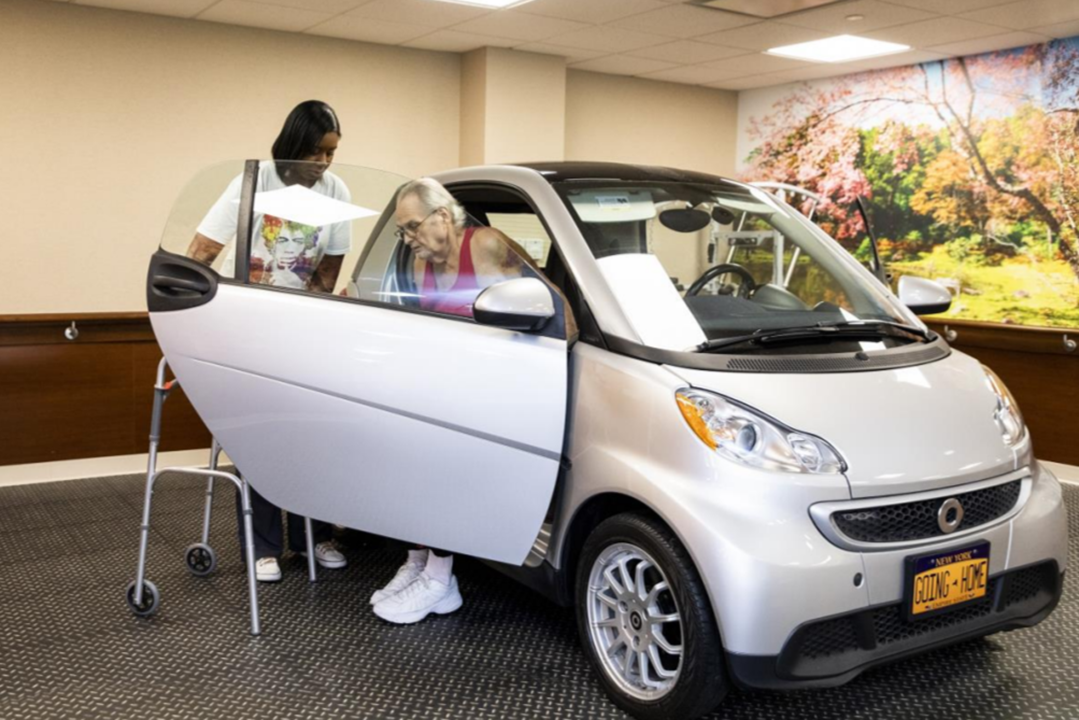
Of course, Smarts also make for some pretty cool visuals for clinic websites. Some facilities love their Smarts so much they dedicate entire webpages to them, like this page from the Brentwood Rehabilitation & Healthcare Center.
So, the next time you see a car seemingly randomly parked in a hospital, now you know why. These cars are helping people stay mobile, and that’s awesome. In a weird way, these hospitals are also preserving these cars, because most old Smarts are driven until the wheels fall off.
If anything, I think this is a noble second life for the Smart Fortwo. I remember when stereotypical car enthusiasts mocked the Fortwo and journalists questioned why it existed. Only weirdos like me championed them. In America, sales were good only for one year. Now, I suspect most people don’t even care if Smart came back to America. So, to see these cars help people puts a smile on my face.
(Topshot: Smart/The New Jewish Home)

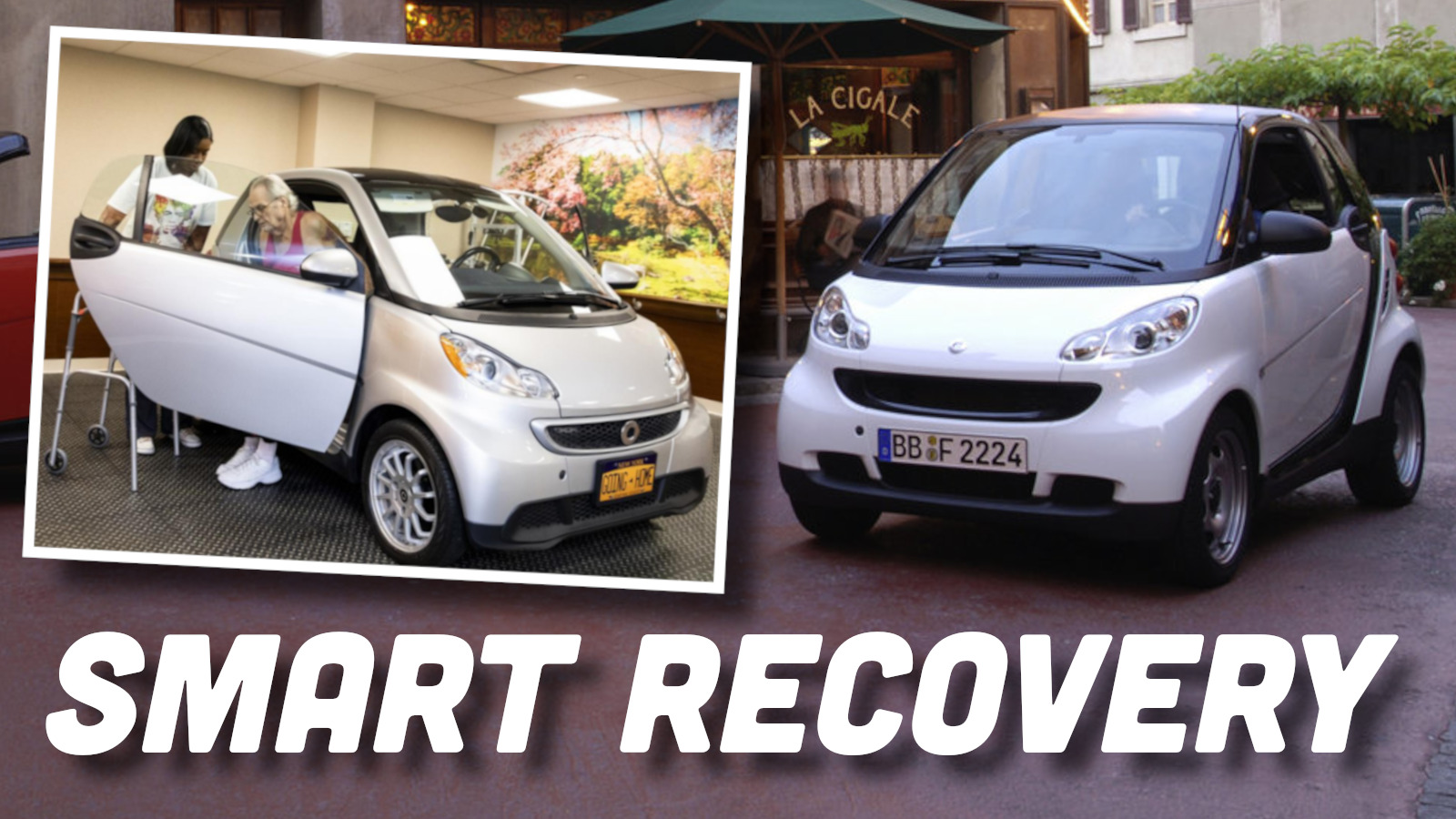







A few years ago my mom bought a new CR-V because she was having difficulty getting out of her Avalon. I was concerned because I thought she was getting too old to drive, but the reality is that she has someone drive her places, and the CR-V was the right seat height and there was room for her walker in the back. That last picture in the article is exactly what it’s like.
That a Tran-Sit simulator costs $15,000.00 should be the real issue here. Unless the photos are not showing its additional features, it looks like something that shouldn’t cost anywhere near that amount.
You would think that, but having been in healthcare supply chain roles for more than 25 years now, things are always more expensive than they should be. A lot of this is due to regulations around what can be used as materials or certification needing to passed for use in the human body. (all experiences with US healthcare, so no information about other countries) I can give a lot of examples, but just one is that for some surgical tools, batteries are used. Same alkaline batteries (C123) that you can buy for $1-2/each online in bulk. But to be used in the OR, they need to be sterilized in individual peel packs. $80/each from the supplier, those were on back order and we had to ration them for the surgeons. I asked if we could order them from Staples and have our sterile processing dept run them through the low temp machines and pack them. Because there was no protocol from the battery mfc for hospital sterilization, we couldn’t do that. The vendor had a protocol from the manufacturer so they could process them, but an individual hospital couldn’t. Our estimate was that sterilizing and packing those same batteries ourselves would have taken the total cost/battery to just under $6. So facilities had to pay over 1000% markup to use the same batteries because of regulations lobbied for by the medical device companies.
I certainly understand an OR item has to be a different quality than off the shelf for everyday use. I’ve watched enough OR videos and/or interacted with surgeons enough to know they’re not using a Dewalt or a Craftsman drill when they’re doing a knee replacement. But as the article points out, they’re using a Smart as a step in for the Tran-sit, so it’s not like they needed to be sterile field compliant. The Tran-sit manufacturer is probably going to be upset with this article. 🙂
In 2005, my late father’s best friend in Germany had a stroke that left him with limited mobility on one side. He sold his beloved 1984 Mercedes-Benz 200 D and bought a Smart car. That turned out to be the perfect car for ground to seat height, larger door, smaller footprint, easier ingress and egress, and easier to see out.
For wheelchair users even a crossover or minivan is too high- You want a seat height about the same height as your wheelchair’s seat height so transferring is just sliding (easy) and no lifting (hard). Once seated behind the wheel you need a place to fold or disassemble your wheelchair and stow it, and a 2 door car with it’s long doors, suicide doors, or a sliding door are bonuses. Explains why you see wheelchair users hoarding 2 door. coupes and compact 2WD extended cab pickups…
The second generation Mazda MPV was the perfect height for my friends stroke ridden mom.
My grandmother was pretty disabled toward the end of her life. She bought a new 2014 Kia Soul—after having a stroke and re-learning how to drive—and got a few years of independence, but then ended up being more of a passenger in that Soul…or my (at the time) 2015 Grand Cherokee, or my mother’s (at the time) 2012 Sonata. And she went to lots of rehab programs.
Point is, we never thought about specifically practicing car ingress/egress, and this was not a part of occupational therapy that was ever offered to us. That said, Mema was big-and-tall, so I don’t know how well a Smart would have worked.
Still, I’m glad this exists.
After my late grandmother broke her femur years ago, she rehabbed at a facility that had a Trans-Sit (or something like it, but pretty sure it was the exact model). I’m no rehab professional (although I did end marrying one, more on that in a second), but my big concern looking at it was that the door was quite wide and opened to a full 90 degrees (maybe beyond)-it seemed like a far more generous opening than what an actual car would provide. Seems like using a real car would be better.
Either way, thanks for writing a unicorn of an article that both me and my occupational therapist wife will find interesting. Probably the first and last time this will happen, but gotta take the victories where you get them.
Of course an effing medical device cost more than an actual used car. Yes I know it is designed for a purpose, I just get tired of the everything marked up for specific industries like medicine and education.
I once saw an exhaust gasket that was for all the world identical to what I’d use on my ’73 Dodge, but because it was for a Lycoming and therefor “Aviation” grade, it cost hundreds of dollars. I get that aviation parts need to be incredibly reliable, but I swear this was still just a regular old fiber gasket.
Flip through a school supply catalog or even worse a school science catalog and you will not believe the markups.
I wonder if “aviation” grade is anything like “nuclear safety-related”…it may be a commercially available part, but the special label means that the part was subjected to extensive (and expensive!) inspection and testing.
Medical=insurance. Next time you’re in a hospital/clinic, note that the electric outlets are probably a different color than you’re used to. It’s not medical-grade plastic, it’s just to differentiate them and add a beefy markup to cover lawsuits. And, of course, just because they can.
They need to add a ‘Black Diamond’ challenge next to the Smart car in the form of a Miata with the seats all the way forward.
The little wind up key is sooooo cute! What a nice detail!
I camped out in a Smart ForTwo at the junkyard once during a freak downpour and it was a LOT roomier than I ever gave it credit for.
They’re genuinely huge inside. 6’2” is an easy fit with lots of headroom.
I’m 205 cm tall and fit in Smart car easily. I appreciate the ideal ground-to-seat height and larger door for easier ingress and egress.
I never thought about it but a smart is fairly easy to get in and out of the whole thing is basically a door. So many people with mobility issues get elements, xb, and cubes. Soul is kinda getting there too. They always seem to end production of the vehicles people with mobility issues prefer.
This is why we have a Spark EV for my grandmother.
I wouldn’t have thought spark was that easy to get into it’s been a while since I’ve gotten in one though. Ive talked to an old lady with a soul ev for similar reasons. Seen many older people get leafs they are pretty easy to get in and out of. The old compliance evs are great for older people who only really drive a few miles.
Huh, thing I never would have thought of
Those little casters on the simulator are probably hard to roll over carpet, so that’s a win, and it would be easy to install jacks to change the height if necessary.
By the way, there’s this commonly held belief that SUVs are easier for seniors and the disabled to get in and out of, and it’s bulshit. For the last year or two of my mother‘s life, she was terrified of getting out of any car where she couldn’t touch the ground while sitting in the seat. Falling will do that to you. Anything more than about 18-20 inches off the ground is no good. That’s why chairs are that high, except for barstools.
That was why the Scion xB made numbers with senior citizens. The PT Cruiser also sold well with the elderly.
A Scion xB with the build quality of a M-B w123 would be my forever car.
Would a Mercedes A class be worth a look?
It’s full of “features” as opposed to to the striped down w123 , it’s not a box, and as far as I know it’s not available in the USA.
As far as I know M-B has abandoned the w123 massively overbuilt concept, and they have dropped out of the taxi biz as of a couple of years ago.
I want to try a Metris, but from what I hear they are not bank vaults on wheels.
Same for the Soul. It’s easy for old farts to get in&out of, and mobility worked well for the few months I had to use a walker due to a broken hip. Get in, fold the walker, overhand it to the passenger side.
Depends on one’s height.
I’ve noticed women 5 ft 3 and below have an easier time getting in and out of hatchbacks and sedans.
I’m around 5 ft 7 so sedans and crossovers are still okay. My 6 ft+ friends don’t ever need the sidestep on pickups and SUVs.
The thing is though is that most people, even some gymrats, lack core/glutes/leg muscles and makes getting in and out of a low car something more difficult that it needs to be for them.
Most people have terrible getting in and out of cars technique, it’s like watching somebody try to get into a bag of golf club standing up. Or people who tried to stand up on one leg while the other leg is still inside the car.
I’m 6 foot tall, and 70 years old, and one of my cars has a seat height of about 10” , actually butt height is about 8” maybe. Just put both feet on the ground, lean forward and stand up. Hands on top of your knees if you need it.
When I lived in Minneapolis, I was the only one under 70 in my neighborhood. One of the guys in the neighborhood was a machinist and big time car guy, and he drove a lowered S10. And so did (what seemed like) every one of his buddies. There would be 5-7 of them outside his house every once in a while. I asked him why, and he said that once lowered, they were way easier to get in and out of!
So now I am reconsidering slightly lowering my ES sedan. Just an ich all around.
Your method is my method. Sometimes I hold on to the door handle – for stability not for force. I’m 77.5 yrs.
How about a feature that toggles the seat between entry/egress and driving position?
Long story, but I hated my parents Outback. Mom wanted it because it “sits up high” and got it after dad suffered several strokes. As they both declined the flaws of that car for seniors became clear. Short story, you want low floor, high roof, high-ish seat. Outback has ground clearance, but you don’t want that, especially because you have to get your legs in and out, the roof isn’t that high, and the windshield is very swept, so bumped heads are a possibility while you’re simultaneously trying to lower your head and bring your legs up in one coordinated movement into a relatively narrow opening. The back seat is terrible because the rear door opens nothing near 90 degrees, and there is a small space you have to navigate your feet to get in. A CRV or minivan is better, or a Grand Marquis with a nice slippery leather bench seat. At the time I tried to get them to look at a Mazda5, which to me is perfect when you look at the angles, openings, and available handles to grab on to. The sliding doors make easy egress and entry for rear passengers, and the seat height is just right.
My MIL has an Outback and is realizing the limitations for her, as getting in/out is increasingly harder. Her choice for replacement? Ford Maverick. Hybrid, which she loves, and easy to get in and out of. Of course, she can’t find the color/trim combo she wants, so it hasn’t happened yet.
Great article, too.
The squarer the angles the better…
My grandmother is 84 this year and developing hip problems, so what did she do? Go out and buy a new Accord, probably one of the lowest ‘normal’ cars still on the market these days. It takes her around 30 seconds to pull herself out of it, but ‘no, I don’t want to drive one of those ugly tall cars, I want something stylish!’
Lifted wagons are comedically hard to get into. My dad’s normal V70 is just like any other normal ‘low’ car where you slide your body into it. My parents’ XC60 is just like any other CUV or MPV where you literally open the door and walk in.
My XC70 is the worst of both worlds where you have to lean your body back like you would to get in the V70, but also step-up while doing it instead of sliding down. It’s rather unintuitive and the number of passengers I’ve had clang their heads hard against the upper roof rail while getting in or out shows how poorly thought-out the ingress and egress is on that car.
“normal V70 is just like any other normal ‘low’ car”
Low? That’s 61 inches tall!
I think the cutoff for ‘low car’ is about a foot below that.
Low in the context of the modern CUV pandemic. I have never ridden in a lower car than that.
This is actually why some older folks love Smarts! They sit higher than a typical small car, but lower than a real SUV (basically how crossovers used to be like). You basically just slide in and slide out without climbing up or stepping down. 🙂
I am confused they buy the custom equipment to customize it for the patients own vehicle but buy the Smartfor two because it is easier to fit into? How does that help the patient get into their personal vehicle unless it is a Smartfortwo?
The simulator is definitely better than any cheap car they could buy, but I get why some facilities will go with a car if the simulator costs $15,000. Hell if space is not a concern you could come out ahead by picking up a mechanically totaled sedan, crossover, and truck for less than $15,000. That would cover the three types of vehicles that over 90% of the population drives on a daily basis.
The Kia Soul would also suit this purpose. Small cars that are higher up than most cars but lower than an SUV or truck.